Last Updated in June, 2024 by Patrick | Published: 2020
A flexible and pragmatic approach to a full ICAO IFR rating in Europe
Update: Read here about the new EASA BIR (BASIC Instrument Rating)
Since writing this article, the new EASA BIR (Basic Instrument Rating) became available, and I highly recommend it as the best path towards an instrument rating for EASA pilots. Please read about it here.
It is often described among the flying community as the biggest step in a pilot’s career: the Instrument Rating, qualifying a pilot to fly using IFR and in IMC (i.e. without external visual reference). It includes enroute and terminal area PBN operations (now the most common and specified way of navigating using Satellite Navigation instead of receiving ground based radio station navaids). It also allows to fly instrument approaches down to a minimum decision height of 200 feet (60 meters). Sounds fancy, and it actually is. And the good news is that acquiring the IR isn’t as expensive, difficult and bureaucratic as you might think.
I recommend the EASA CB-IR route towards your full (ICAO compliant) Instrument Rating as it has proven to be one of the less burdensome ways to attain a useful rating.

Acronyms & Abbreviations
We’ll start up (without clearance, haha) with some acronyms & abbreviations used in my article below.
CB-IR: Competency-based training COURSE for Instrument Rating
IFR: Instrument Flight Rules (follow your filed flight plan and you will not hit anything, anybody or violate any airspace)
HPA: High Performance Aeroplane (basically all turbine powered single pilot airplanes)
IMC: Instrument Meteorological Conditions (weather minima worse than VMC)
VFR: Visual Flight Rules (exactly the opposite to IFR, but the view is better)
PBN: Performance Based Navigation
IRI(A): Instrument Rating Instructor
ATO: Approved Training Organisation (= flight school)
MCQ: Multiple Choice Question
FFS: Full Flight Simulator (the multi million dollar full motion sims in use at airlines)
FNPT II: Flight Navigation Procedure Trainer II (the less expensive stationary stuff used for learning to fly an airplane without reference to external visual cues. Like your 1998 home flightsim, but with some hardware, the outside view set to zero visibility and EASA certified)
WX RDR: On board weather radar aka. color coded water drop reflectivity indicator
SE IR: Single Engine Instrument Rating
ME IR: Multi Engine Instrument Rating
MEP: Multi Engine Piston Class Rating
TL;DR
(too long, didn’t read) How to get your (fully ICAO compliant) IR using the CB-IR training course:
- Find a good (freelance) IFR Instructor
- Sign up for distance learning at an ATO of your choice, study and pass theoretical exams at a national aviation authority of your choice
- Fly 30h “outside an ATO” with your dedicated IRI and then 10h “inside an ATO” of your choice, pass IR skill test (practical flying exam). Fly IFR!
EASA CB-IR
If you happen to be an owner pilot or have access to or can charter an airplane, take a look at the EASA CB-IR and decide if it is advantageous for you.
Both the EASA IR and EASA CB-IR lead to exactly the same privileges (and license entry).
Namely: “IR”. The difference between a CB-IR and IR lies in how your training course looks like, not what rating and privileges you attain.
It’s important to emphasize that the correct definition according EASA of CB-IR is “Competency-based training Course for Instrument Rating”.
Any rumors floating around of “CB-IR” license entries and reduced privileges compared to an IR course such as higher approach minima etc. are FALSE.
Some authorities will add “CB-IR” to the remarks section of the license to reference that the CB IR course does not include the HPA theory element required for turbine powered single pilot aeroplanes. Not an issue. If required (e.g. for flying a Piper Meridian, TBM, Pilatus or Citation Mustang) the HPA certificate is issued by ATOs after doing what is usually a one or two day theory course, there is no authority exam involved.
The advantage of the CB-IR is, especially for the practical flying training, that it can be done around your personal, operational and financial priorities. In other words, you can train and focus on those elements and flights that you intend to do once you have the IR, and keep it within a more reasonable budget if necessary. It is flexible and builds on your competence and previous experience (e.g. if you already hold a third country ICAO compliant IR, previous experience is credited).

While an “EASA IR” course has to be done 100% inside an ATO, the “EASA CB IR” course allows for a more individual approach to obtaining the rating, where a significant part of the flying training can be achieved outside an ATO, for instance in your own airplane with a freelance IRI taking into account your individual schedule, types of flights (I avoid the term “mission” for private GA), area of operation and future utilization of your airplane. Do note that both a conventional EASA IR course and the CB-IR course lead to the same result, namely a fully ICAO compliant “IR” entry in your license! Note: I know I am repeating myself, but it’s important to get this right and fight the false rumors floating around about CB-IR leading to an IR with „limited IFR privileges. So once again: The CB IR course leads to a “normal”, “full” IR.
Prerequisites
- At least a EASA PPL
- Night Rating (otherwise it’s a day only IR, which is of course just as useful if you don’t want to fly at night. Flying in a single engine airplane at night (or in IMC with low clouds, down to minima) doesn’t exactly leave a lot of options open in case of an engine failure, but that topic is better suited for another article).
- 50 hours as PIC cross-country
Theoretical part
The good news first. The CB-IR theory volume has been reduced quite a bit, and you can almost all of it in the comfort of your home using distance learning. I recommend to completely finish the theory before flying. Why?
Let me elaborate a bit. The disadvantage of power studying for the theory exams first (without any practical flying alongside) is that the concepts you are supposed to learn will be completely, well, uhm, theoretical (if not foreign) to you. There will be no “aha, that’s how it works in the plane” effect. So why do I recommend to get the theory out of the way first then?
At this point I’d like to separate two things:
- Theoretical Knowledge
If you really take the distance learning course seriously, take notes, research topics further on your own etc.. and in fact manage to deeply understand EVERYTHING, well yes, that’s a good thing, but you will most likely still fail the theoretical exams without MCQ exam question prep. In my role as an IR instructor, I am always available and accompany my students during the distance learning course for discussion and any questions they might have, but that also doesn’t suffice for passing the exams. - Theoretical Exams
Thousands. Of. Multiple. Choice. Questions. In an ideal world, there would be a far better suited way to establish if you fulfill the legally mandated learning objectives. In reality, you need to pass those MCQ tests. Clicking question banks over and over is almost completely pointless from an educational point of view, but it is what it is.

Most people pilots seem to be very motivated about the practical flying part, and not so much about learning question banks and clicking through distance learning courses after a long day at the office. “Netflix and chill“ are the enemy and certainly didn’t make it easier. Anyway, the gist of it is that the 30 hours of flight training are quickly scheduled and completed, while wannabe-IFR-pilots haven’t even tackled a single theoretical exam yet. People Pilots then push the “boring” theory stuff out further, life gets in the way, time flies by, and suddenly it takes a year, maybe two, or, in the worst case, the theory course and exams never get done. Now that is frustrating. Also, doing both flying and theory at the same time might be too time and energy consuming for some, which isn’t beneficial for the training as well.
Back to the “Ahh, that’s how it works in real life” effect I mentioned above: Once my students get their theory out of the way and start flying, I consistently engage with them and spend many hours of explaining, reviewing and repeating the theoretical concepts targeted to the actual flights. I hope this completes the circle of theory first, exams second, followed by third, individually tailored theory instruction alongside practical IFR flight training. Contrary to the above, everyone is different, and it might suit you to do theory and flying at the same time, perfectly fine, do what works for you.
For the theory exams (consisting of a question bank of countless multiple choice questions that need to be memorized, as there is no way to answer them correctly only through understanding the subject matter) you get to pick any EASA ATO that offers a theory course. You do not need to complete the practical flying training at this ATO. Theoretical part and practical part can be done at different ATOs if you desire. You could sign up with this ATO, or this one, just examples.

Since most private pilots and owner pilots have demanding jobs, (the money for flying has to come from somewhere, right?) I highly suggest to use a distance learning provider. Unless you live 5 minutes from a renowned ATO that offers a classroom theory course with good instructors, that is. I’ve had students use this ATO, which uses the course provided by CAT Europe which includes the well known Aviation Exam question bank prep software. If you want a good overview of the theoretical part, take a look at Erlend’s CB-IR theory books, they are very good and I browse them frequently to brush up on stuff!
To make this clear: You can do your training at any ATO anywhere in EASA land, no matter where you intend to fly during your training. Subsequently, you can sit your theoretical exams at any EASA authority (Austro Control in Vienna is a favorite for many!).
In my opinion, once basic concepts are mastered, extended cross country flying, experiencing (and analyzing) different weather, terrain and foreign ATC is an important part of IFR flight training. Limiting the area of training to national boundaries would be silly, especially if it involves some of europe’s smaller countries.
Yes, some ATOs are not interested because they understandably only want students using the ATO‘s own airplane and instructors. It’s not always easy but it is usually possible to find a solution in that regard.
And while it is called distance learning, there is also at least 8 hours of face to face theory instruction. A little excursion to how I do this: It’s one day spent together, usually 1-1 instruction, by going over all the theory subjects as well as clarifying any open questions before the exams. In addition to the minimum 8 hours, over the course of the CB-IR, I for one far exceed these 8 hours as I constantly interact with my students, discussing and answering any questions that come up along the way. It just doesn’t always happen face to face (rather via Messenger, Telephone, Videocalls etc..), except for those 8 hours in person of course! And don’t forget the extended briefings before, and debriefings after each flight. In my experience, over the course of the 30 hours practical flying, I repeat and go over lots of theory for IFR flying, again and again.
Once you have done the distance learning course and clicked through the exam prep software (including progress tests to check if you are ready) you can schedule an exam appointment at any EASA authority (e.g. you could do the theory at an Austrian ATO and sit the exams in Germany) for the 7 theoretical exams. Most people spread the 7 exams around three separate days of exam sittings (3-2-2, 2-3-2 etc..).
Practical part
So you’ve clicked away like mad and passed the multiple choice exams? Good job. What a relief. Now it’s time for flying.

A single-engine competency-based modular IR(A) course must include at least 40 hours of instrument time under instruction, of which up to 25 hours may be done in
- FFS (Full Flight Simulator, nice, but that would be very costly) or
- FNPT II (Flight Navigation Procedure Trainer, a certified simulator category as defined by EASA)
When the applicant has completed instrument flight instruction provided by an IRI(A) these hours may be credited towards the 40 hours above up to a maximum of 30 hours. In any case, the flying training shall include at least 10 hours of instrument flight time under instruction in an aeroplane at an ATO.
This means:
Minimum flight training hours required: 40
Of these 40 hours:
- a maximum of 25 hours can be done in a SIM (FNPT2)
- a maximum of 30 hours can be done outside an ATO with a qualified instructor
- Depending on the plane you own or intend to charter, it can be cheaper to fly for real instead of using the 25 hours in the SIM, or vice versa. Some FNPT II can cost as much as a cheaper plane that might do the trick as well. Depends and can be decided on a case by case basis. Advantage of a sim is that, unlike real flying, it’s independent of weather, can be scheduled in advance and one can always hit the „freeze“ button to explain and discuss.
If you are eager to experience how IFR concepts can be grasped in a SIM, contact me for a 1 on 1 remote / distance training session using your home computer, you’ll need a flight sim such as X-Plane and a free program called Parsec (so I can see your screen remotely at my end). It works very well, and while it doesn’t count as log-able instruction time, it certainly has a positive effect for IFR training.
- Note: The training outside ATO can, technically speaking, also be done in a VFR aircraft under VFR. This can be an option to learn the basics such as attitude flying (pitch and power) in a less expensive plane and save some money for the first few hours. This might be subject to authority interpretation though. I list this here for completeness, to emphasize that IR training time, for instance, doesn’t necessarily require IFR flight plans.
Summary: You can fly 30 or more hours with an IR instructor in your own airplane, or in a chartered one. You could also fly much more, e.g. 100 hours, but the ATO will still need you to fly at least 10 hours “inside” with them. The 10 hours “inside ATO” are a minimum and are always required. Some of my students who own an airplane have added their plane to an ATO, and apart from a “outside vs. inside ATO” transition on paper, nothing changes.
Note: For Multi Engine it is the same, but it is 45 total hours required and up to 35 hours possible outside the ATO which are creditable. Unless you absolutely want to skip an IR for single engine airplanes, it’s generally recommended to do the single engine IR followed by a multi engine IR „transition“. Expect around 5 (instead of 45 hours) in a MEP to add ME IR on top of your SE IR. Your license will then say something like SEP(l) IR and MEP(l) IR. Or, SEP(l), SE IR, MEP(l), ME IR.

Once you have your 30 hours training completed, you sign up at an ATO and perform the remaining minimum of 10 hours followed by the IR skill test.
The liberty of the CB-IR is nice, but I must say it makes sense to chose the ATO beforehand, and in spite of flying 30 hours outside of this ATO, make sure you (or rather, your instructor will) already align the training procedures to this ATO during those 30 „outside ATO” hours. This will make things easier for you, as you will already be accustomed to certain peculiarities of different ATOs.
Example Pilots
Floris
Floris, a keen pilot ready to advance his flying repertoire at fast pace, owns a Cirrus SR22 Turbo single engine piston, flies since one year and would now like to get his IR, preferably utilizing his own airplane. He signs up for the theory course at an ATO. He clicks away, passes all exams, and is ready to fly.
He then hires a qualified IRI instructor who provides individual instruction according to Floris’ future plans with his plane. The instructor also happens to know a cooperating ATO where the owner pilot will eventually finish the 10 last hours of flight training.
Ideally, as is the case with myself, the instructor can facilitate the 30 hours individual instruction as well as the last 10 hours inside the ATO. Thereby, all training can be oriented to the ATOs standards and syllabus from the first hour onwards.
He flies 30, or maybe even more, hours with his instructor, and combines IFR training with the type of flying he intends to do (vacation, business, mountain etc..) as well as with the ATO procedures (yup, everyone re-invents the wheel a little bit).
Once the 30 hours “outside ATO” are done, and if the ATO is of the cooperating persuasion, Floris’ plane can even be added to the ATO fleet and he can finish his training inside the ATO on his own plane, with the same instructor he used so far. The IR skill test is also flown with an examiner aboard his own plane.

Claudia
Claudia is an established pilot and frequent flyer, however she doesn’t want to own an airplane, but charters a Cessna 172 at her local field. She does the theory just like Floris. Once that is done, she gets a good deal by buying 30 hours in bulk on her favorite charter plane, and uses an individual instructor to train 30 hours in it. She then uses the local ATO which happens to also operate a Cessna 172, flies the remaining 10 hours at this ATO to complete the training and then does her skill test.
While certainly not the norm, and involving a steep learning curve, there is nothing (except for serious amounts of money) prohibiting doing the IR in something fancy like a Piper Malibu (now called the M350), Meridian (Piper M5/600), TBM, Pilatus PC12 or similar. Pressurization always helps, and these airplanes do certainly allow for a higher dispatch rate when meteorological conditions mandate on board WX RDR and proper anti-icing capability. But, that’s a “whole ‘nother story” for another article.

License
For motivational purposes, here is a license with an IR. In the end, even utilizing the more customized CB-IR training route, it still takes determination on your part to get those two letters (IR) in your license, but it’s worth it. Flying IFR means accessing a more professional aviation system, and now you are allowed and able to partake in it. Therefore, the IR is also welcome occasion to introduce pilots to fly more procedurally and standardized, along with the “big boys” in the system.

I once heard an accomplished IR pilot and avid proponent of SOP (standard operating procedures) state that “flying IFR should not be exciting, it is supposed to be boring and uneventful, that’s the goal.” I’d say he is right, and may add that IFR flying is a fantastic way to experience joy, excitement and feeling accomplished while keeping the flying structured, uneventful and safe.

Cruising along in the flightlevels (even the lower ones), with ATC handing you from one sector to the next, not worrying about visual reporting points, airspace infringements, traffic and terrain, believe me, it is nice. And so is climbing through some overcast clouds into bright sunlight on a day where VFR would keep you grounded. Or descending through the layers, picking up vectors from ATC to an ILS, spotting the brightly flashing lead in lights for landing. Unless you find those lights too bright, then go ahead and “kill the rabbit”.
I hope this guide and intro to the EASA CB-IR was useful. Please comment below or contact me anytime if you have any questions or remarks regarding the EASA CB-IR.
EASA CB-IR Picture Gallery








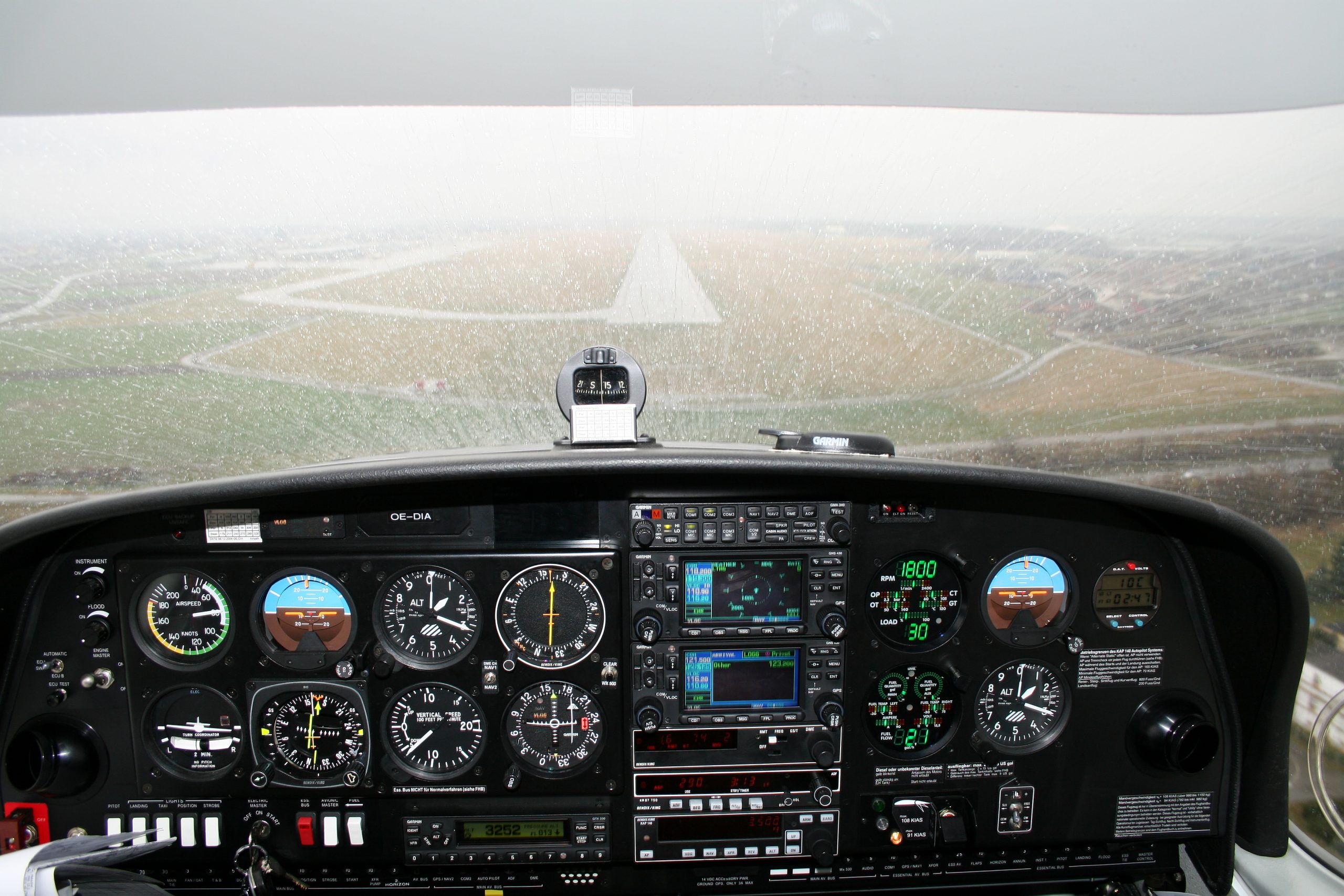


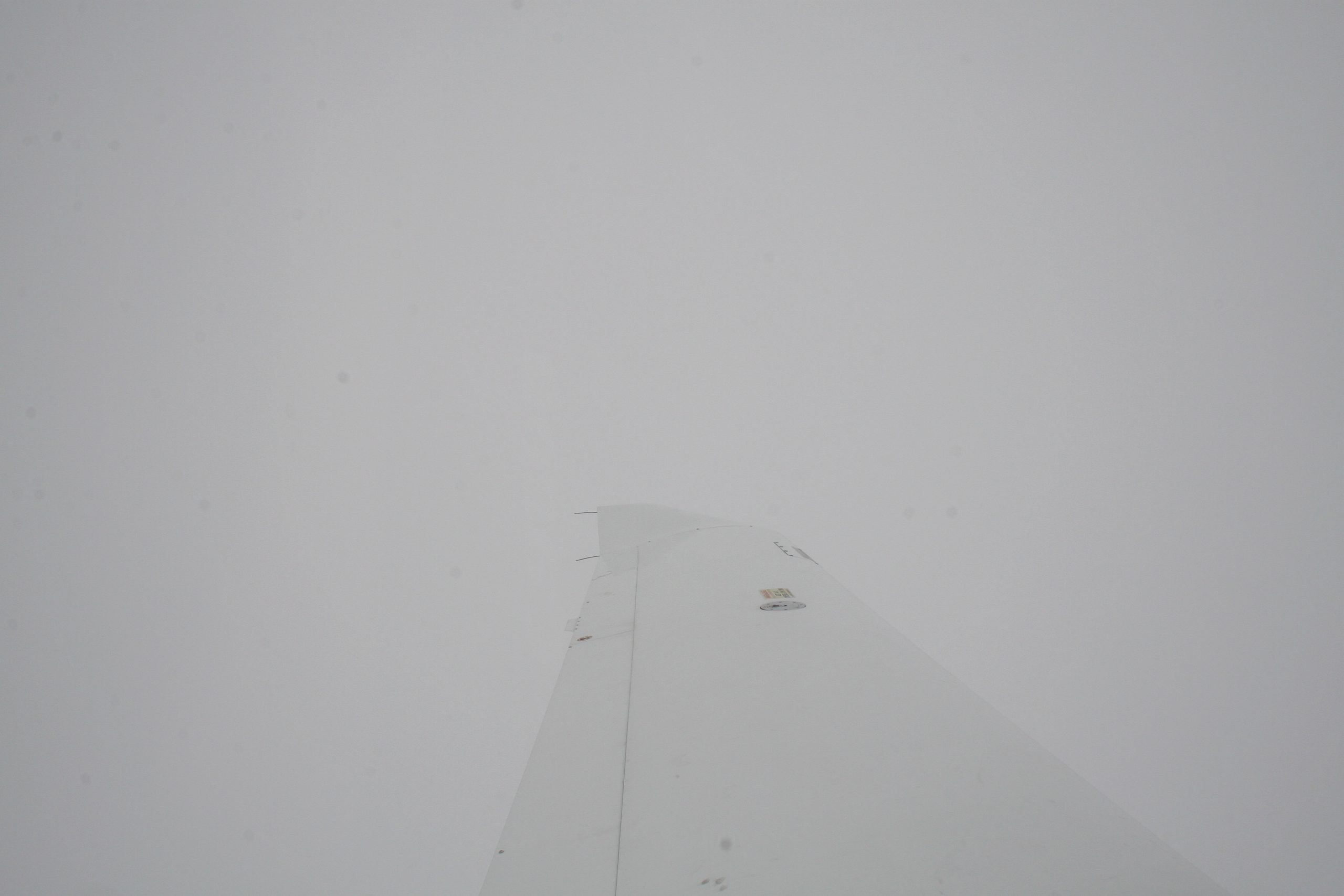


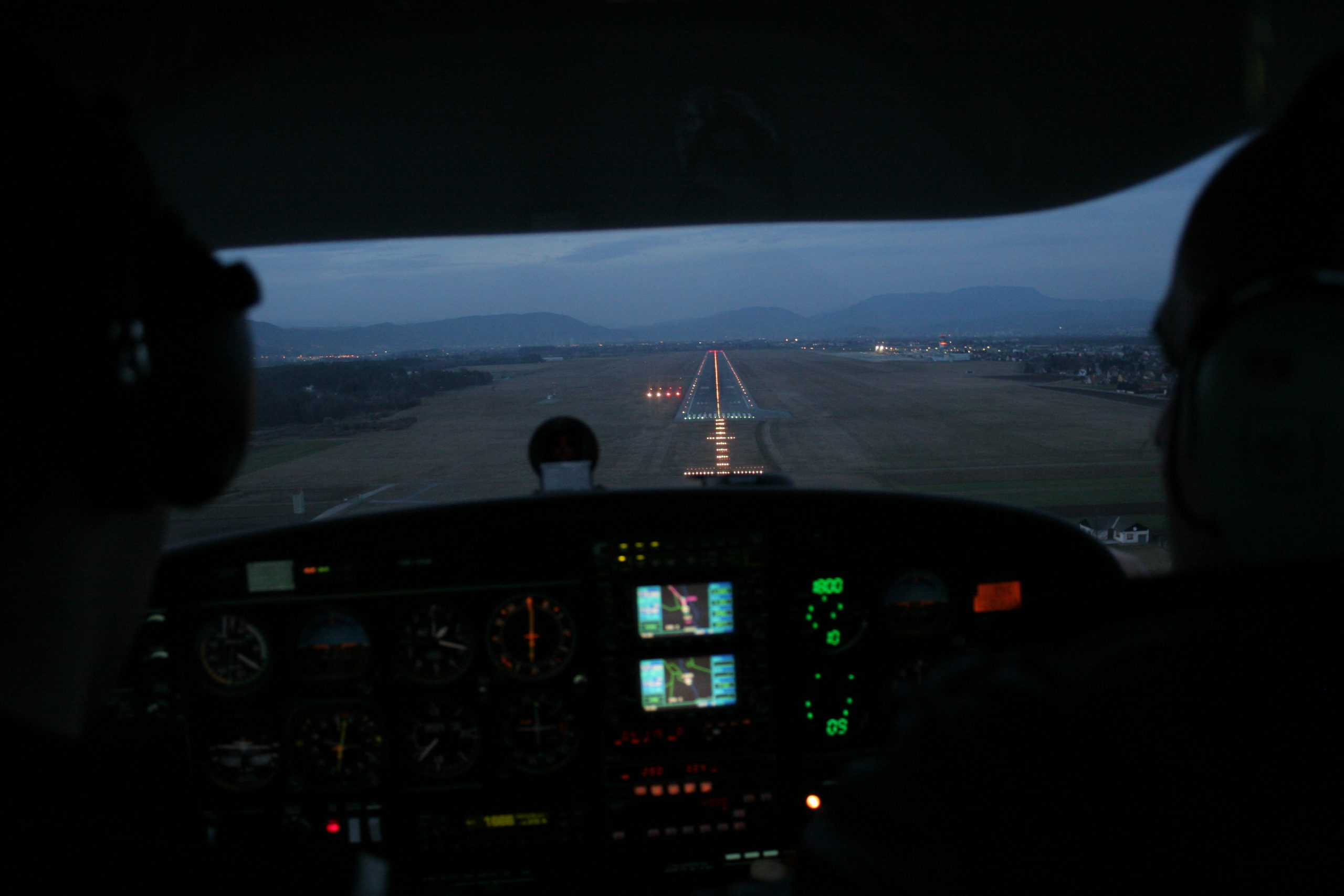
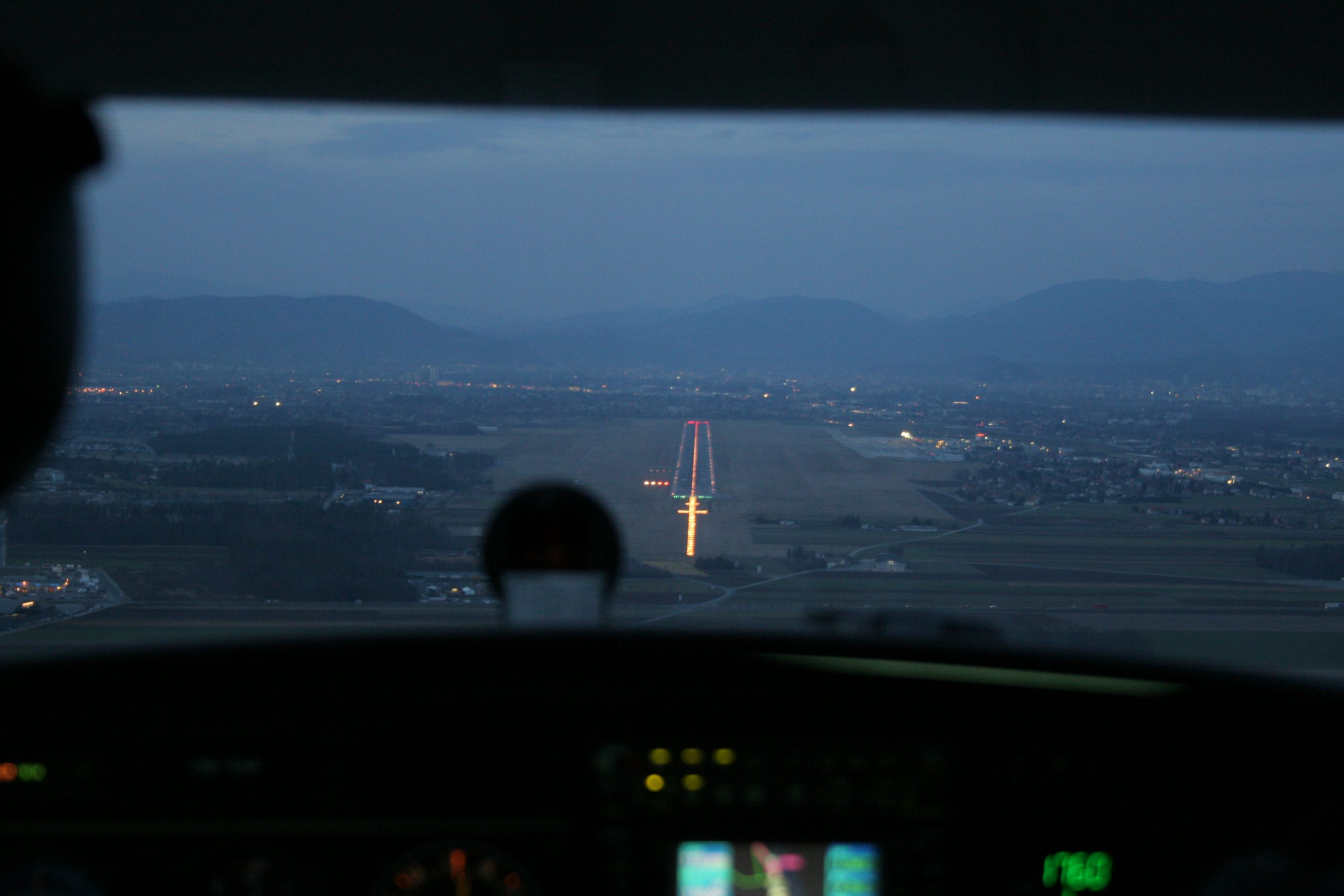

SEO: freelance, instructor, EASA, CB-IR, CBIR, private pilot, Instrument Rating, IFR, fly, private, pilot, owner, airplane, general aviation, europe, flying
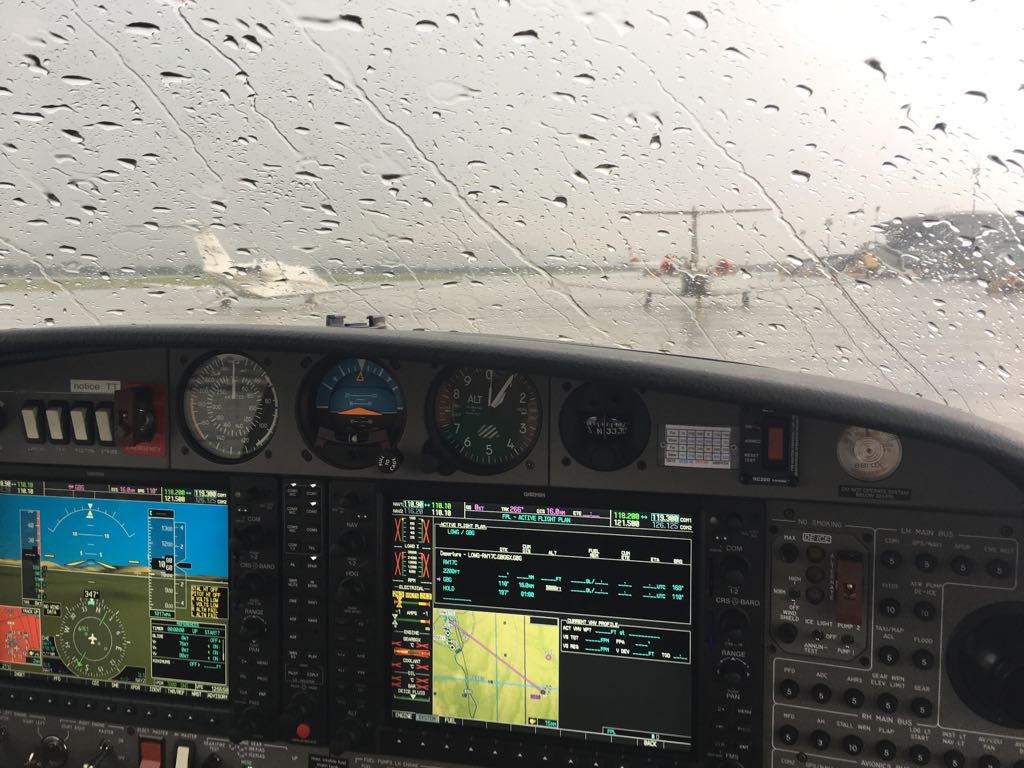
Hey Patrick,
Huge thank you for all the detailed information!
Two questions:
1) I have logged IR instruction time (with an authorized instructor) before, but I have done that before taking on IR theory (and passing exams of course). Will this IR instruction time count towards the 40 hours minimum requirement?
2) If 30 hours outside of ATO can be credited, AND 25 hours can be credited on FNPT II simulator, does this effectively mean I can do 25 sim outside of ATO + 5 hours flying outside of ATO + 10 hours inside ATO? (all with IRI)? It sounds like it, but can you confirm?
regards
greg
Hi and thanks for the comment. You might also want to check out the BIR route: https://patricklienhart.com/cms/easa-bir/
1) Yes, it will count. There is no requirement to complete the theoretical course or exams before practical flight instruction.
2) I can confirm your question by quoting the regulation excerpt below.
The method of attaining an IR(A) following this modular course is competency-based. However, the minimum requirements below shall be completed by the applicant. Additional training may be required to reach required competencies.
(a) A single-engine competency-based modular IR(A) course shall include at least 40 hours of instrument time under instruction, of which up to 10 hours may be instrument ground time in an FNPT I, or up to 25 hours in an FFS or FNPT II. A maximum of 5 hours of FNPT II or FFS instrument ground time may be conducted in an FNPT I.
(i) When the applicant has:
(A) completed instrument flight instruction provided by an IRI(A) or an FI(A) holding the privilege to provide training for the IR; or
(B) prior experience of instrument flight time as PIC on aeroplanes, under a rating providing the privileges to fly under IFR and in IMC,
these hours may be credited towards the 40 hours above up to maximum of 30 hours,
(ii) When the applicant has prior instrument flight time under instruction other than specified in point (a)(i), these hours may be credited towards the required 40 hours up to a maximum of 15 hours.
(iii) In any case, the flying training shall include at least 10 hours of instrument flight time under instruction in an aeroplane at an ATO.
(iv) The total amount of dual instrument instruction shall not be less than 25 hours.
(b) A multi-engine competency-based modular IR(A) course shall include at least 45 hours instrument time under instruction, of which up to 10 hours may be instrument ground time in an FNPT I, or up to 30 hours in an FFS or FNPT II. A maximum of 5 hours of FNPT II or FFS instrument ground time may be conducted in an FNPT I.
(i) When the applicant has:
(A) completed instrument flight instruction provided by an IRI(A) or an FI(A) holding the privilege to provide training for the IR; or
(B) prior experience of instrument flight time as PIC on aeroplanes, under a rating giving the privileges to fly under IFR and in IMC
these hours may be credited towards the 45 hours above up to a maximum of 35 hours.
(ii) When the applicant has prior instrument flight time under instruction other than specified in point (b)(i), these hours may be credited towards the required 45 hours up to a maximum of 15 hours.
(iii) In any case, the flying training shall include at least 10 hours of instrument flight time under instruction in a multi-engine aeroplane at an ATO.
(iv) The total amount of dual instrument instruction shall not be less than 25 hours, of which at least 15 hours shall be completed in a multi-engine aeroplane.
(c) To determine the amount of hours credited and to establish the training needs, the applicant shall complete a pre-entry assessment at an ATO.
(d) The completion of the instrument flight instruction provided by an IRI(A) or FI(A) in accordance with point (a)(i) or (b)(i) shall be documented in a specific training record and signed by the instructor.
Hello Patrick,
Fits of all, congrats for your detailed explanations regarding CB-IR. I would like to ask you if you know the road from BIR to CB-IR. Currently I hold an BIR license, and I would like to move forward to CB-IR.
Thank you,
Lucian
Hi Lucian,
please see my BIR article.
Any tips for ATO
Sure, email me.
Hi Patrick,
I have recently passed the theoretical exam on CB-IR and shall soon begin my practical training.
I own an experimental RV-10 that I want to use for the first 30 hours, but I can not find any information if EASA allow the use of homebuilt aircraft in the training outside ATO.
Have you any information on this?
Hi Oskar,
congrats on the CB IR theory pass.
EASA requires non ICAO CofA planes to be approved by the competent authorities for use in an ATO.
For the CB IR the AMC for EU Regulation 1178 (Air Crew Regulation) stipulates in AMC4 to Appendix 6 Modular training courses for the IR
ED Decision 2014/022/R
SECTION Aa IR(A) – COMPETENCY-BASED MODULAR FLYING TRAINING COURSE FLYING TRAINING
TRAINING AIRCRAFT
„(b) The aeroplane used for the instrument flight training provided outside an ATO by an IRI(A) or FI(A) should be:
(1) fitted with primary flight controls that are instantly accessible by both the student and the instructor (for example dual flight controls or a centre control stick). Swing-over flight controls should not be used; and
(2) suitably equipped to simulate instrument meteorological conditions (IMC) and for the instrument flight training required [Foggles].“
In most EASA countries IFR in experimental planes is not possible. However, training IFR procedures (= simulated IMC/IFR on VFR flightplans in VMC) should be possible in your plane. It depends how your plane is equipped, if local procedures allow e.g. simulated IFR approaches in VMC/on VFR flightplans etc…
Try to find an instructor who knows the regulations and is willing to maximize the training potential in your own plane.
Fly safe,
Patrick
CB-IR vs. Basic IR: Erlend wrote a good comparison here https://www.cb-ir.net/cb-ir-or-bir/
Hi Patrick,
Thanks for the detailed post. It really helps.
Maybe you could clarify a few more points:
– Is there a time period within which all theory exams should be passed?
– Also, is there a period after the last theory exam the practical training must be completed?
– If the process takes a few years, does the ATO usually require the student to annually re-register?
Cheers.
Thank you for your comment. See answers below.
– Is there a time period within which all theory exams should be passed?
From the first theory exam you have 18 months to finish the last. It is 7 exams and up to 6 exam sittings. So you can do 1 exam at each sitting and one time at least two exams.
– Also, is there a period after the last theory exam the practical training must be completed?
FCL.025 specifies the theory to be valid for 36 months.
– If the process takes a few years, does the ATO usually require the student to annually re-register?
According FCL.025 a recommendation to take your exams from an ATO will be valid for 12 months. After this time, if you haven’t taken at least one exam you will need another recommendation to take them.
Kind regards,
Patrick
Thank you! Patrick